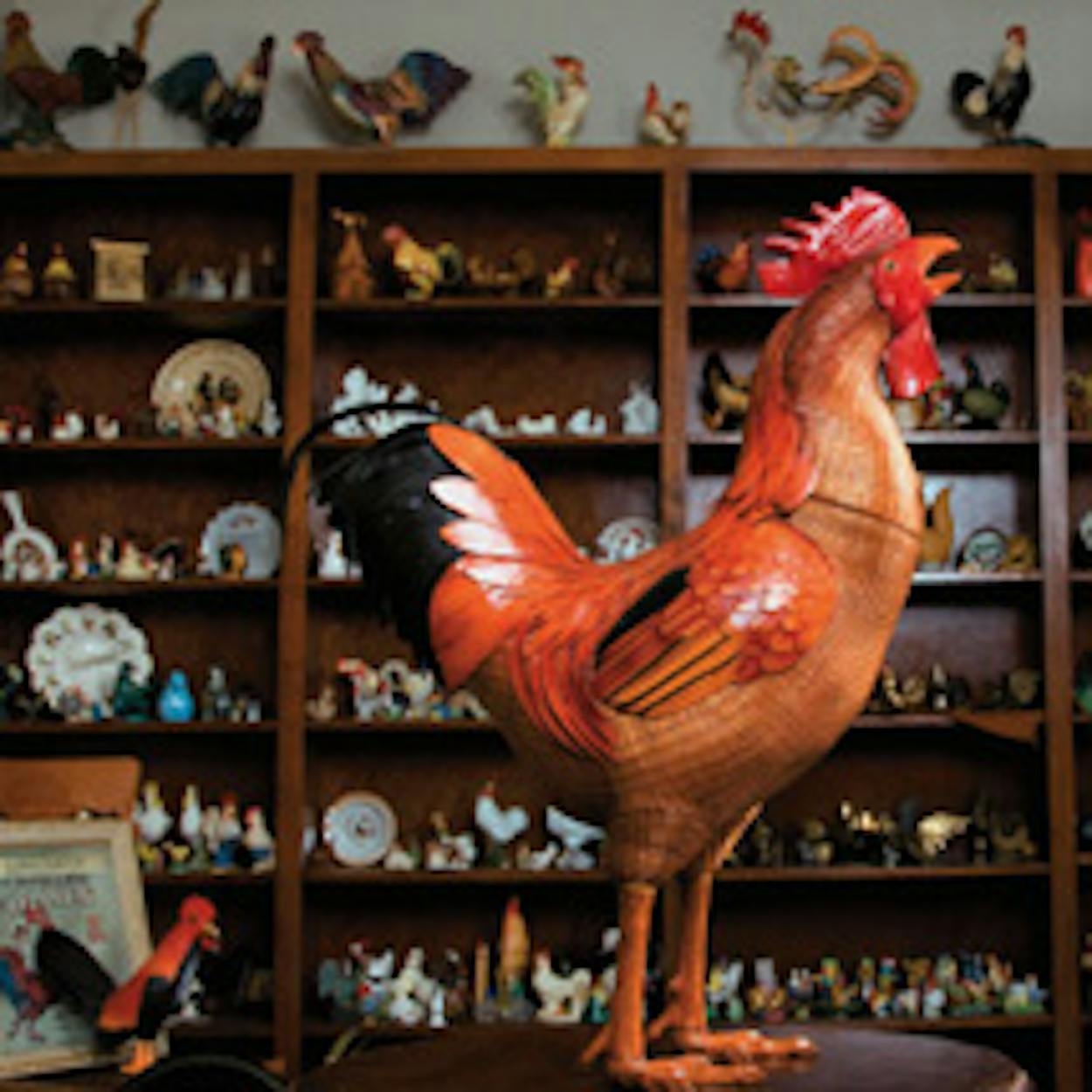I DROVE ALMOST TO THE ARKANSAS border seeking relief from mass-produced minimalism. Don’t get me wrong: I’m awed by big-box stores full of big boxes of insanely cheap yet hip furniture made in China of pretend wood and assembled (by you) in your home. But after an hour lost in one such store, wandering among paper lamps and translucent plastic tables, I found myself starved for consuming encounters with less ephemeral furnishings—the kind that had withstood the test of time and seemed poised, on legs of real maple or cast iron, to withstand it some more. This craving for the whiff of heirlooms, rather than Swedish meatballs, medium-density fiberboard, and birch veneer, was powerful enough to propel me all the way to Gladewater, the antiques capital of East Texas.
Gladewater’s history follows the trajectory of many neighboring towns, beginning in 1873 with the arrival of the Texas and Pacific Railway, which hauled out peaches, cotton, and timber and hauled in people and their stuff. Then came the oil boom of the thirties, when the population skyrocketed from five hundred to eight thousand. And all these new people needed more stuff hauled in (including, in the sixties, a boxcar of daffodil and jonquil bulbs for Mrs. Helen Lee, whose botanical passion is on public display at the family’s ranch each blooming season). Then the boom busted, the train ceased stopping, and the town scrambled to reinvent itself before it completely evaporated. Given Gladewater’s long history with stuff, a bountiful future based at least partly on dealing antiques seemed destined.
When I first pulled into town, however, I had my misgivings; Gladewater’s Antique District, with its no-nonsense storefronts of red, yellow, or beige brick stretching down Main Street and along the railroad tracks, presents a first impression of pure utility. But after a bit of poking around, I was delighted to discover that the uniformly blocky buildings house a riot of variety and whimsy. At least a couple dozen stores, ranging from wee specialty shops to sprawling multidealer malls, are packed with vintage goodies and pedigreed antiques. The gilded, enameled, glazed, ruffled, and stuffed are squeezed in with the whirling, ticking, pinging, and chiming. I saw old fishing lures, grannies’ aprons, pillbox hats, a copper desk fan, pinball machines, Fiestaware, cuckoo clocks, hand puppets, and a wood-and-wire shopping cart. In no time, the glorious hodgepodge—including the outstanding rooster collection at the East Texas Museum at Gladewater—had revived my material spirits.
Considering the impossibility of maintaining an inventory of one-of-a-kinds and the odds against a certain something still being there waiting for you, it’s silly to cite specific treasures. But I can’t help myself—starting with the World War II Signal Corps turntable (sturdy enough to withstand combat and still spin a recording of taps) at B&B Antiques, which also boasted such humdingers as a partners desk with a Victrola tucked in one side, a 1934 Mills jukebox, and an ornate chair from the mid-1800’s that makes into a table. Then there was the collection of carnival glass at Fullerton’s, where the proprietor’s enthusiasm for this iridescent pressed glass, first manufactured in the early 1900’s and still in production today, is acutely infectious. Over at the Pacific East Antique Mall, one of the newest additions to the town’s multidealer malls, dainty enameled pins dating from the twenties proved demure standouts in a long case filled with flamboyant costume jewelry, including rhinestone brooches the size of a cat’s head. (You definitely won’t find a couple of the little pins there anymore; I bought them.)
But it was at the Gladewater Antique Mall that I discovered the one item that best epitomized the permanence and legacy I longed for: a drop-leaf table from the mid- to late-1800’s with a base of chestnut and a top of honey-colored wood whose source, an attached note surmised, had to have been the trunk of a pear tree at least three feet in diameter. The note also promised that the table was “yours to pass on to your grandchildren.”
GLADEWATER ANTIQUE DISTRICT
A list and map of stores is available from the Gladewater Chamber of Commerce. Mrs. Lee’s Daffodil Garden, southwest of Gladewater, is open to the public only during blooming season, typically mid-February to mid-March (call first), 903-845-5780, daffodilgarden.com. The East Texas Museum at Gladewater is open Saturdays only, 116 West Pacific Avenue, 903-845-3907.
WHILE YOU’RE IN THE NEIGHBORHOOD:
Your brush with nostalgia doesn’t have to stop when the stores close. You can catch gospel and country performances on Friday and Saturday nights at the Gladewater Saturday Night Opry in the old Cozy Theater, 108 E. Commerce Avenue, 903-845-3600, thegladewateropry.com. And you can bunk in the heart of the Antique District—on an antique iron bed, even—at the swank Honeycomb Suites, scent-ually located above the Glory Bee Baking Co., 111 N. Main, 800-594-2253, honeycombsuites.com.







